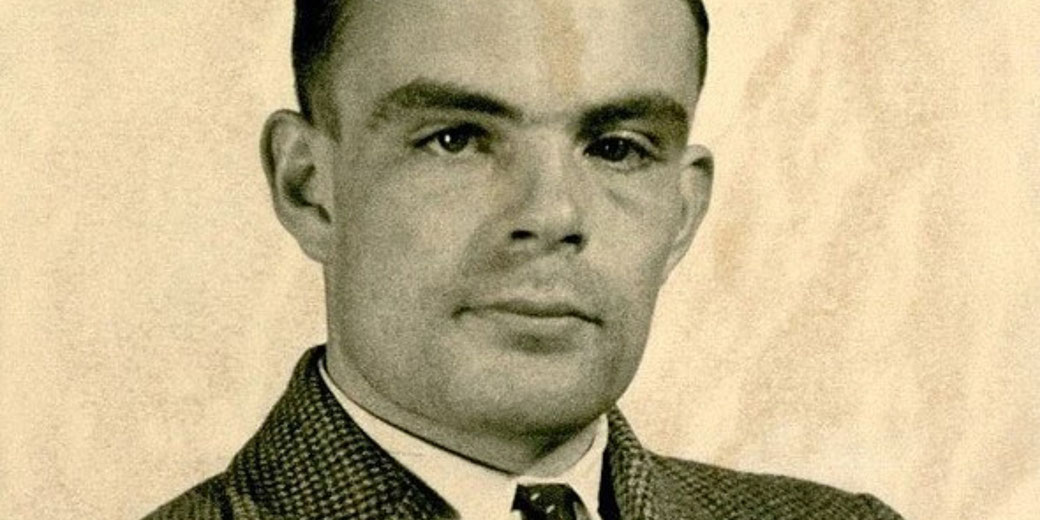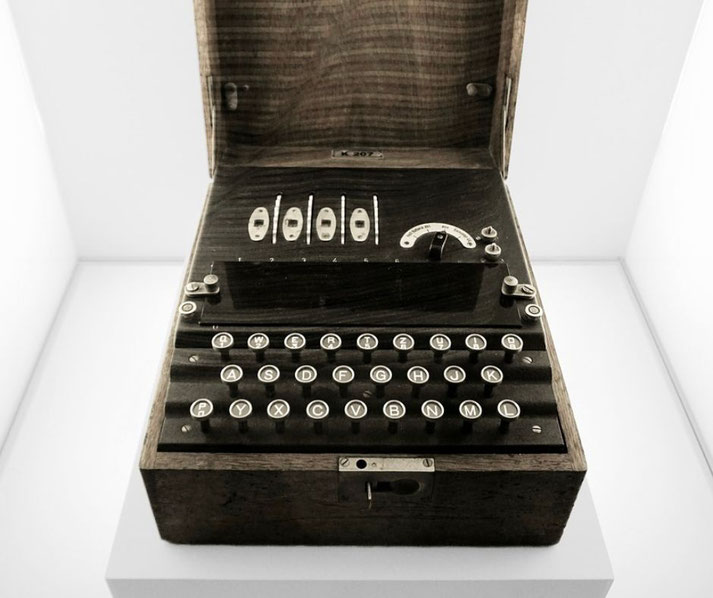How the Allies finally cracked the Enigma machine's mysterious codes to help win WWII

During World War II, the outcome of entire campaigns often depended on information. German commanders transmitted orders and intelligence that they encoded with the Enigma machine, largely confident that its daily-changing ciphers remained unbreakable.
As the conflict escalated, Allied codebreakers worked in secrecy to expose that illusion and helped build a new form of warfare, one fought with logic, mathematics, and machines that combined electrical and mechanical parts.
What was the Enigma machine?
From 1939 onward, the German military largely relied on the Enigma machine to secure its most sensitive communications.
Each branch of the armed forces, Army, Navy, Air Force, and intelligence, regularly issued instructions, requested reinforcements, and reported field positions via messages that operators encoded after they prepared the machine each day.
German officials largely placed trust in the number of possible settings, which rested on the combination of multiple rotors, a plugboard, and configurations that changed with every keystroke.
The number of potential settings reached approximately 158,962,555,217,826,360,000, which made brute-force decoding seem impossible without prior knowledge.
At the core of this confidence stood a firm belief in the machine’s mechanical reliability, since German engineers had constructed a cipher system that produced a different output for the same letter every time it appeared in a message.
Once each key on the keyboard was pressed, the electrical signal passed through three rotors, then into a reflector, before it was routed back.
The plugboard further scrambled the signal, which it did by swapping paired letters.
Each time the operator pressed a key, the rotors shifted position, which generated a different letter substitution, and as a result, the cipher system effectively could not rely on static patterns.
By the late 1930s, the German military had fully incorporated Enigma into its operations.
Daily key sheets issued to units in the field provided instructions for rotor order, ring settings, starting positions, and plugboard wiring.
Operators generally followed procedures for setup, message formatting, and key changes because any mistake could result in garbled messages or, worse, compromise.
However, under normal conditions, the encryption generally remained impossible to break because even if an enemy intercepted the signal, the cipher would remain unreadable without the correct machine setup for that specific day.

How the Enigma machine was created
Arthur Scherbius was a German engineer with a background in electrical systems and patented the Enigma machine shortly after World War I.
At that time, radio communication had become more common, but it lacked security, which meant that messages transmitted across public frequencies could be intercepted by any receiver.
In response to this vulnerability, Scherbius proposed a mechanical method for encrypting messages that would produce a cipher strong enough to resist decoding without physical access to the device.
Initially, Scherbius marketed the Enigma machine to banks, commercial firms, and diplomatic services, and his company, Chiffriermaschinen AG, began producing machines for business clients.
Early models attracted some attention, yet the limited customer base and the complexity of the machine prevented widespread adoption.
Still, the core concept remained sound: a message entered into the machine would emerge as an apparently random stream of letters, reversible only by an identical machine configured with the same internal settings.
By the mid-1920s, German military officials recognised the potential for secure, decentralised communication.
The German Navy introduced the machine in 1926, followed by the Army in 1928.
The military versions included extra security features, such as a plugboard and additional rotors and, over time, further updates appeared.
The Wehrmacht's Enigma I was introduced in 1930 and quickly became the standard model for German armed forces throughout most of the war.
It differed from commercial versions in wiring design and configuration options, which provided added layers of encryption.
On 1 February 1942, the Kriegsmarine began using the M4 model, a four-rotor variant that significantly expanded the keyspace and temporarily halted Allied decoding efforts.
How Enigma was used during WWII
At the outbreak of war in 1939, German forces had already built their communication system around the Enigma machine.
Early German victories initially reinforced confidence in Enigma. Blitzkrieg tactics, which required speed and precise coordination, relied on fast, secure communications and Enigma enabled commanders to adjust plans during fast-moving operations in Poland and France.
At sea, U-boats used Enigma to report sightings and receive orders. Submarine patrols operated across the Atlantic, often without direct contact for weeks.
By 1941, German leadership had generally assumed that their messages remained unread, which meant that operational decisions continued under the belief that no intelligence agency could match the amount of mathematical work required to decrypt a single day's settings.
They placed trust in the machine’s structure and ignored the risk posed by human error, repeated message content, or captured materials.
The first breakthroughs
In Warsaw during the early 1930s, Polish codebreakers who worked for the Biuro Szyfrów began examining intercepted German messages.
Without access to an actual Enigma machine, mathematicians Marian Rejewski, Jerzy Różycki, and Henryk Zygalski began analysing the patterns in encrypted signals.
They reconstructed the wiring of the rotors by applying possible combinations and group theory, and as a result, by December 1932, Rejewski had built a working copy.
Over the next few years, they developed mechanical tools to speed up the decoding process, one of which, the bomba, helped test multiple rotor settings automatically.
However, Polish cryptanalysts faced limitations in both resources and manpower.
As German encryption practices grew more advanced, the challenges mounted.
The addition of plugboard connections expanded the keyspace beyond what their existing methods could manage unaided.
In July 1939, the Polish Cipher Bureau had shared its results with British and French intelligence.
Just weeks before Germany invaded Poland, Polish officers provided complete documentation, working copies, and examples of their mathematical techniques.
That meeting was the transition of Enigma decoding from isolated national research into a larger, collaborative effort.
How the Allies finally cracked the Enigma code
Soon after they had received the Polish material, British intelligence established its central decoding facility at Bletchley Park, an estate that was located in Buckinghamshire which housed mathematicians, linguists, and engineers who now faced the urgent task of continuing and expanding on the Polish breakthroughs.
Alan Turing was already known for his theoretical work in logic and computation and became one of the leading figures.
In 1940, Turing designed a new machine, the Bombe, which expanded on the Polish version and allowed British analysts to test rotor settings far more efficiently.
Gordon Welchman improved the machine’s search method, making it possible to rule out incompatible configurations with each test.
To narrow the possibilities, codebreakers relied on cribs, expected segments of plain text found in many messages.
Common examples included weather reports, standard openings, or repeated phrases like “Heil Hitler.”
On average, a successful run on the Bombe might take twenty minutes to several hours, depending on the quality of the crib and the settings involved.
Each morning, codebreakers worked against the clock as the Germans changed settings every 24 hours, meaning that the team had to find the correct configuration before the day’s messages became obsolete.
Once the Bombe had found a likely setting, codebreakers used copy Enigma machines to decode the rest.
Successful decodings were passed to military intelligence under the codename Ultra.
By 1944, more than 200 British Bombes were operating, many of them housed at outstations such as Eastcote and Stanmore, which processed upwards of 3,000 messages daily.
Hut 6 focused on Army and Air Force traffic, while Hut 8, where Turing worked, concentrated on naval Enigma.
Despite the progress at Bletchley, some breakthroughs required more than machinery and logic.
On several occasions, Allied forces captured Enigma machines, codebooks, and current settings from German vessels.
On 9 May 1941, British sailors boarded the damaged U-110 and recovered an intact machine, codebooks and secret materials, which provided vital information that allowed analysts to read Kriegsmarine messages more consistently.
Other successes came from boarding weather ships or raiding command posts.
Captured settings provided short-term access, but they also confirmed the machine's setup and helped verify Bombe results.
In the Atlantic, decoded messages allowed Allied convoys to reroute around U-boat patrols, while in North Africa, British commanders received advance warning of Axis supply shortages and troop movements.
Also, in May 1941, Ultra also helped locate and sink the battleship Bismarck.
Churchill considered Ultra one of the war’s most important assets because high-level decision-making benefited from precise knowledge of enemy intentions.
Yet the secrecy surrounding the operation remained absolute. Analysts at Bletchley Park, who worked in isolation from the battlefront, were often unaware of how their decodings influenced events.
Their work didn't appear in public reports until decades after the war ended.
How Enigma changed the history of codebreaking
The Enigma project helped start a new era of information technology. Turing’s theoretical work, including his model of a universal machine, became essential to the development of modern computing.
The practical demands of wartime codebreaking had led to innovations in memory management and task automation, coupled with systematic methods for logical problem solving.
As a result, later efforts at Bletchley included the Colossus computer, designed by Tommy Flowers, which became the world's first programmable digital electronic computer.
Although Colossus was developed to break the Lorenz cipher, not Enigma, its creation came from the same codebreaking environment.
What do you need help with?
Download ready-to-use digital learning resources
Copyright © History Skills 2014-2025.
Contact via email
With the exception of links to external sites, some historical sources and extracts from specific publications, all content on this website is copyrighted by History Skills. This content may not be copied, republished or redistributed without written permission from the website creator. Please use the Contact page to obtain relevant permission.





